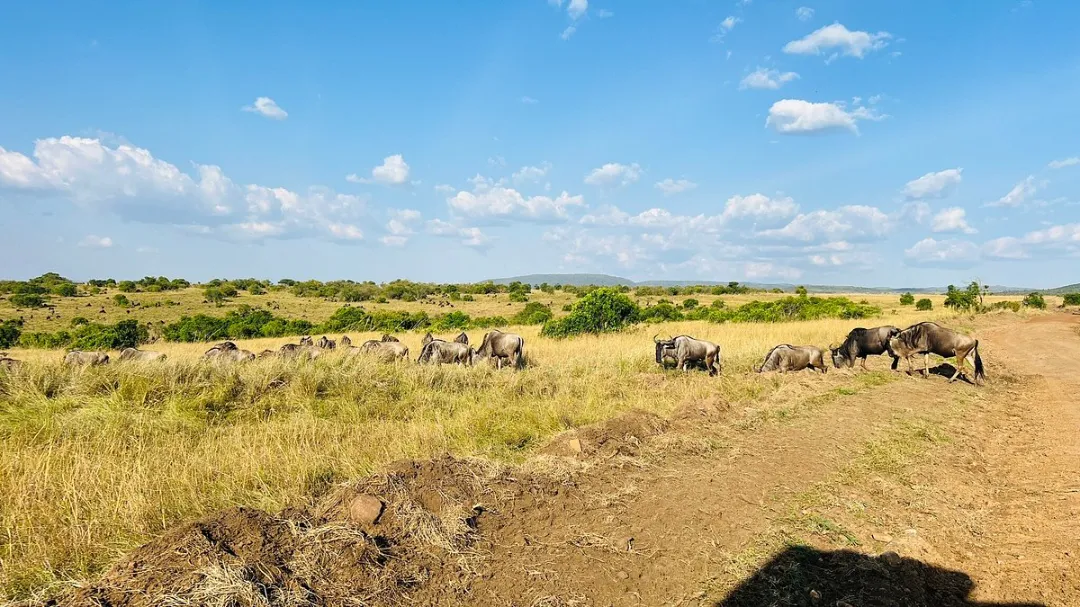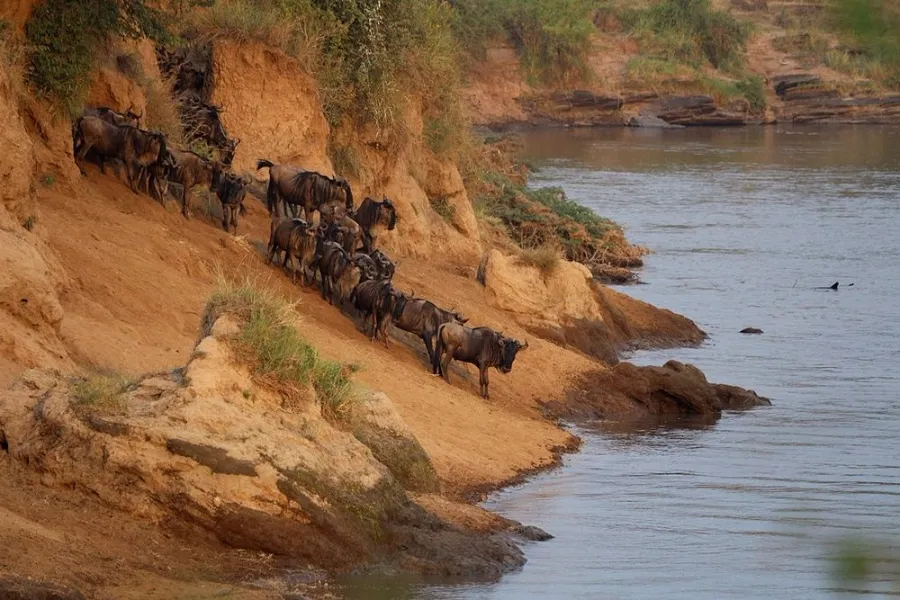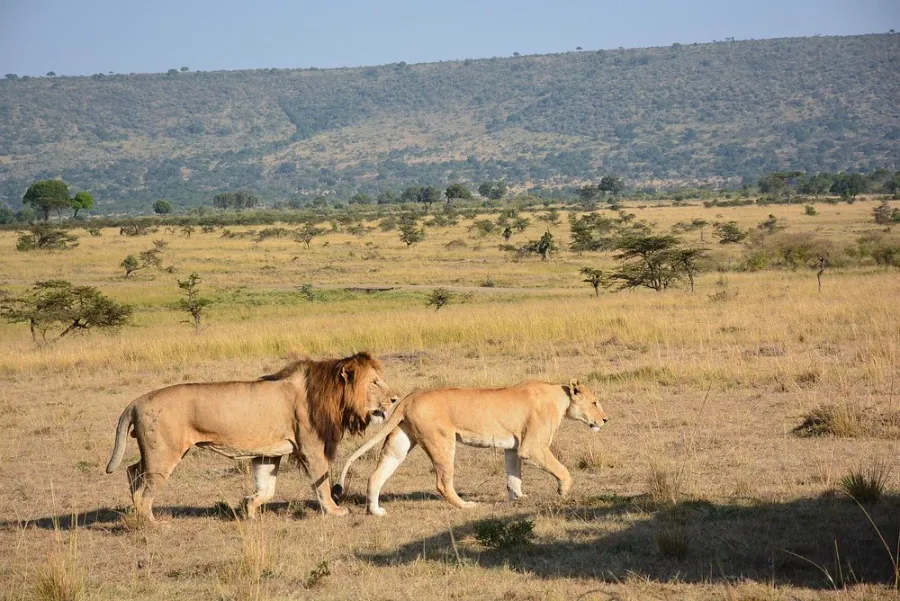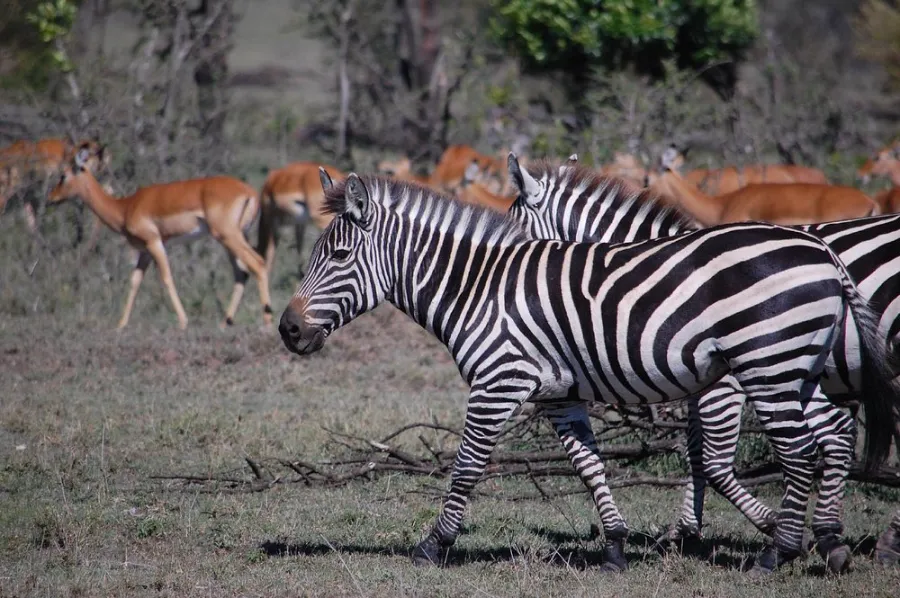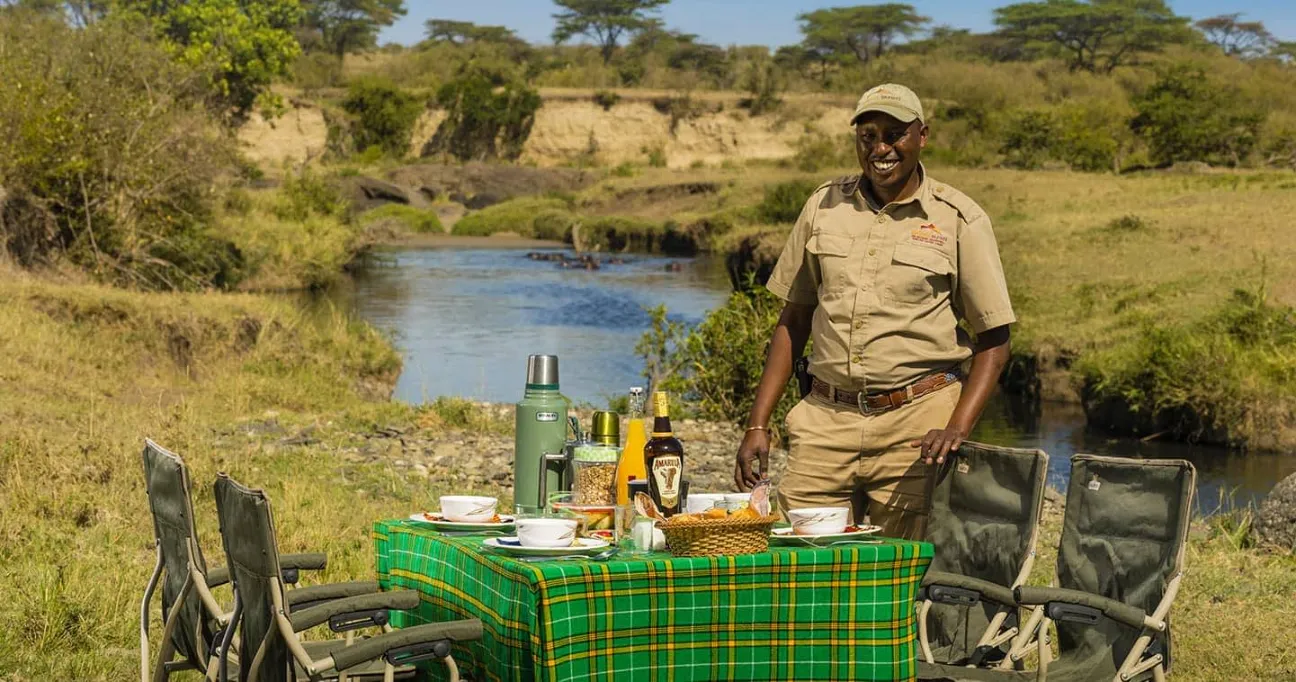Top Wildlife Masai Mara Safari Experiences: Predators, Herbivores, and More
The Masai Mara is renowned for its breathtaking wildlife and is a cornerstone of wildlife conservation in East Africa. When you visit Masai Mara, you’ll encounter the Big Five—lions, elephants, rhinoceroses, leopards, and Cape buffalo- as well as many other captivating species. This article guides you through the top wildlife experiences in the Masai Mara, highlighting the importance of wildlife conservation efforts in preserving this natural wonder.
Key Takeaways
The Big Five of the Mara- lions, elephants, rhinos, leopards, and Cape buffalo- are key highlights of safari experiences due to their iconic status and ecological roles.
The Great Migration, featuring millions of wildebeest, zebras, and gazelles crossing the Mara River, is a must-see spectacle that showcases the challenges of wildlife migration.
Conservation efforts, including anti-poaching initiatives and community involvement, are essential for protecting the biodiversity of the Masai Mara Game Reserve and ensuring its sustainability for future generations.
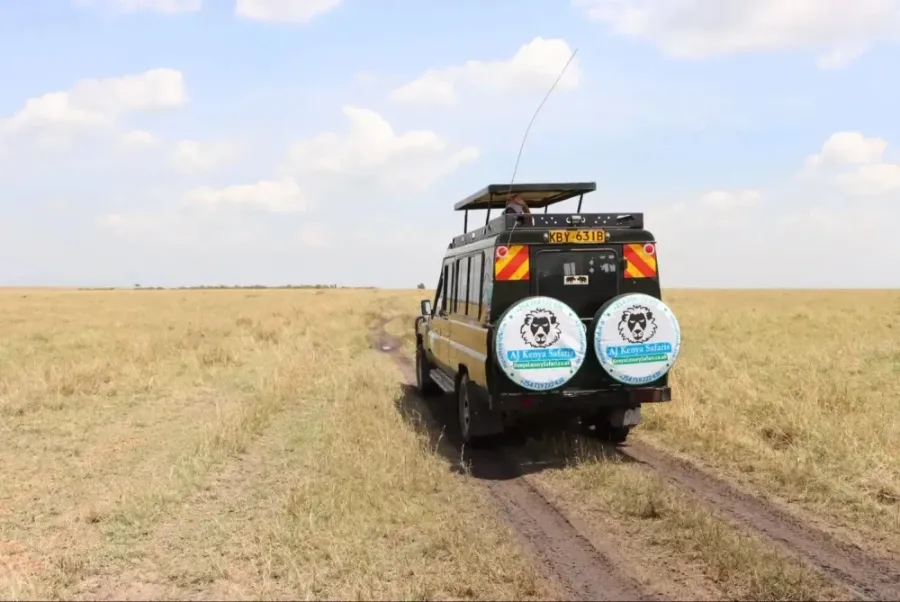
Table of Contents
The Famous Big Five of Masai Mara
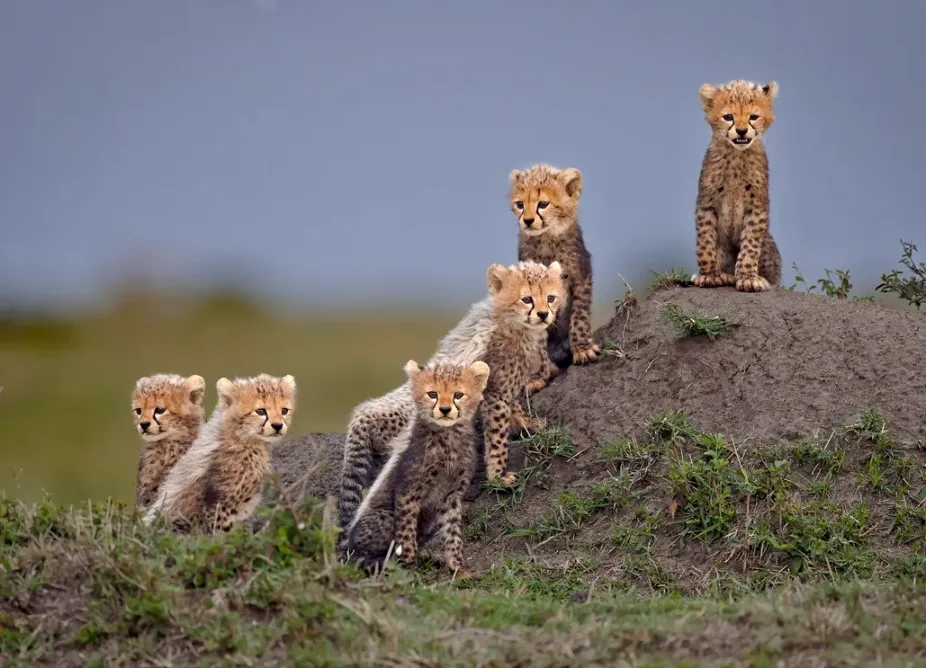
The Big Five—lions, African elephants, rhinoceroses, leopards, and Cape buffalo—are the crown jewels of the Masai Mara, making any Kenya safari a thrilling adventure. Named for their size and strength, these animals are among the most sought-after by visitors to the greater Maasai Mara ecosystem, which is renowned for its diverse wildlife.
On a standard 3-day safari in the Maasai Mara National Reserve, encountering all five of these iconic animals is likely, offering an unforgettable Kenya safari experience. Here’s a closer look at each, beginning with the lion.
Lions (Panthera leo)
Lions, the epitome of wild animals, roam the vast plains of the Masai Mara. The renowned Marsh Pride exemplifies the robust lion population here, with around 850 to 900 lions inhabiting the reserve. A typical pride consists of 15 to 20 members, mainly female lions who do most of the hunting. Male lions usually focus on defending their territory, which can range from 30 to 400 square kilometers.
The Masai Mara’s large herds of prey make it an ideal hunting ground for lions. Lionesses coordinate to hunt animals like African buffalo and plains zebras. Being nocturnal, lions are most active at night, adding excitement to nighttime safari drives.
African Elephants (Loxodonta Africana)
African elephants are another highlight of the Masai Mara safari. These gentle giants live in matriarchal herds led by the largest female, with a single clan consisting of up to 70 individuals. They are often seen along River Mara, drinking and bathing. The Masai Mara, much like the Lake Nakuru and Amboseli National Parks, offers remarkable opportunities to observe these magnificent creatures in their natural habitat.
Despite their massive size — adult elephants can weigh up to 6.6 tons and measure 7.5 meters in length — they face significant threats from poaching and habitat loss driven by the ivory trade. Thankfully, recent conservation efforts have led to an upward trend in their population in the Masai Mara.
Their advanced social behaviors and problem-solving skills make them fascinating subjects for researchers and wildlife enthusiasts.
Rhinoceroses (Rhinocerotidae)
Rhinoceroses in the Masai Mara are elusive yet formidable. Black rhinos, in particular, lead solitary lives and can be quite aggressive, making them one of the more dangerous animals to encounter. Their elusive nature makes them notoriously difficult to spot. In contrast, the white rhino, though not as common in the Masai Mara, is known for its more social behavior, often seen in groups. Both species face significant threats from poaching, emphasizing the importance of conservation efforts.
Despite their poor eyesight, black rhinos have an excellent sense of hearing and smell, aiding them in navigating their environment and detecting potential threats. The white rhino, with its wide mouth adapted for grazing, contributes to the ecosystem by maintaining grassland habitats, showcasing the diverse game of the Masai Mara.
Leopards (Panthera pardus)
Leopards, the most elusive of the Big Five, are often found in the wooded areas of the Masai Mara where they easily hide and stalk their prey. These solitary hunters are mainly nocturnal, meeting only during the mating season. They prey on animals like antelopes and baboons, showcasing their remarkable agility and strength.
Leopards in the Masai Mara are categorized as vulnerable, reflecting the challenges they face in the wild. As part of the greater Masai Mara ecosystem, these big cats play a crucial role in maintaining the balance of the food web, making their conservation vital.
Cape Buffalo (Syncerus caffer)
Buffalos are a force to be reckoned with in the Masai Mara. Usually found in herds of over 100 animals, they are known for their volatile and unpredictable nature, making them impossible to domesticate. Their aggressive behavior makes them one of the most dangerous animals in East Africa, posing significant threats to both wildlife and humans.
Beyond the Big Five: The Big Nine and More
Beyond the iconic Big Five, the Masai Mara safari experience includes the Big Nine, featuring cheetah, giraffe, zebra, and hippopotamus. These additional animals significantly contribute to the Mara ecosystem, offering unique viewing opportunities for safari-goers.
Visitors have excellent opportunities to spot these animals during game drives, adding excitement and diversity to the adventure. Here’s a closer look at these fascinating creatures.
Cheetahs (Acinonyx jubatus)

Cheetahs are the speedsters of the African plains, reaching speeds up to 110 kilometers per hour. They use their incredible acceleration to catch small antelopes and game birds.
Female cheetahs live solitary lives, while males often form coalitions with other males, adding an interesting dynamic to their social structure.
Giraffes (Giraffa camelopardalis)
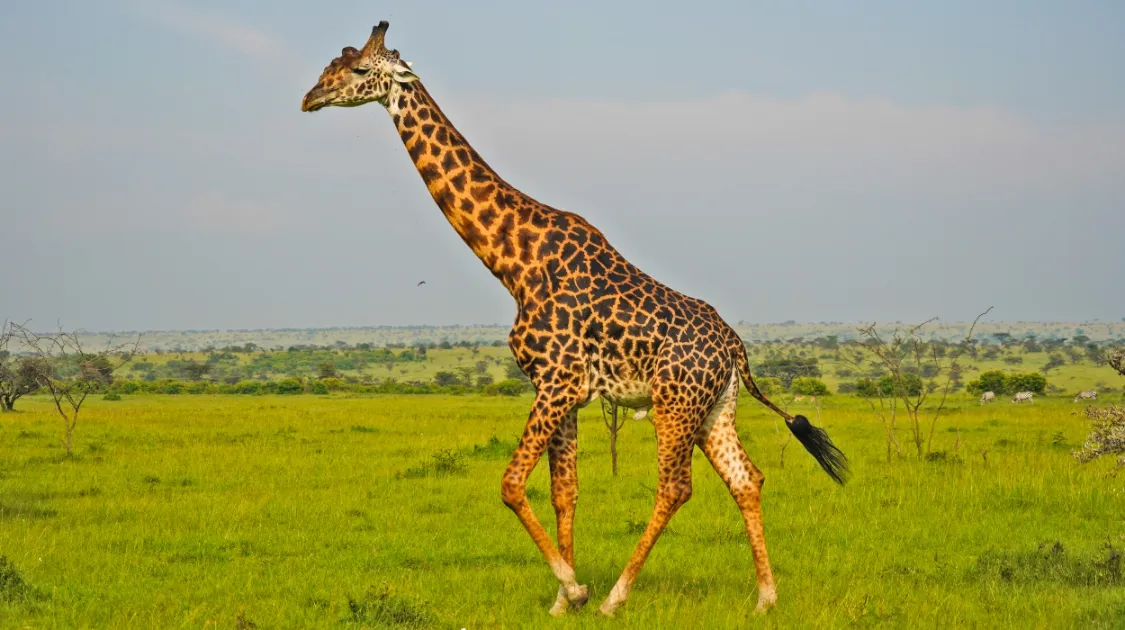
Giraffes stand out in the Masai Mara, both literally and figuratively. The two main subspecies here are the Reticulated or Somali Giraffe and the Maasai Giraffe. These towering herbivores spend up to 20 hours a day feeding, mainly on acacia leaves. Their unique cardiovascular system allows them to pump blood to their brains despite their long necks, a fascinating adaptation that underscores their evolutionary success.
Giraffes can reach speeds of up to 50-60 km/h when necessary, though they usually move at a leisurely pace. Their serene presence adds tranquility to the otherwise dynamic landscape of the Masai Mara.
Zebras (Equus quagga)
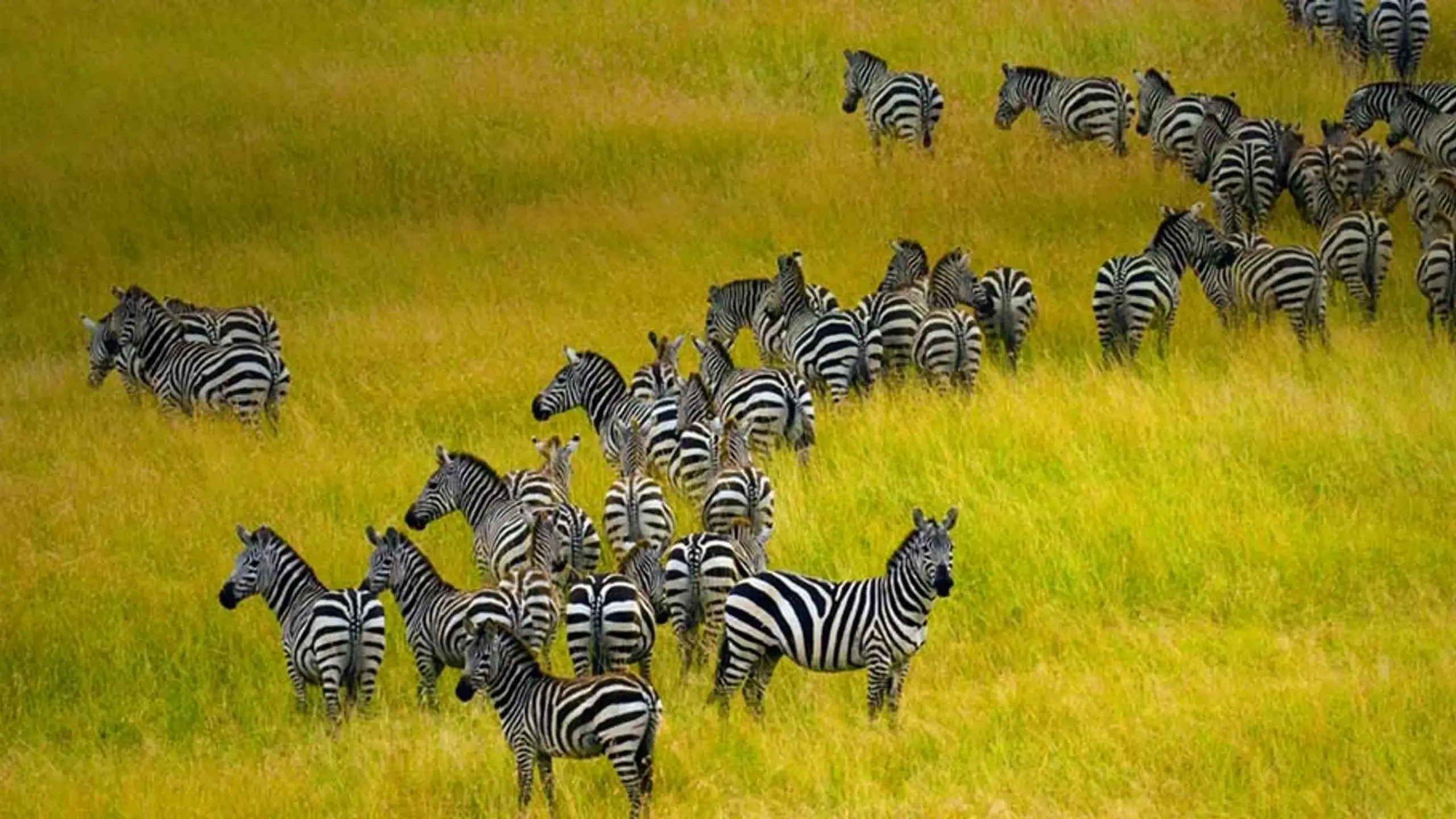
The plains zebra, known for its striking black and white stripes, is common in the Masai Mara. Zebras have a social structure comprising harems of one male with multiple females and bachelor groups. They prefer treeless grasslands and savanna woodlands, grazing alongside other herbivores like wildebeests and gazelles.
Predators like lions, spotted hyenas, and cheetahs often target zebras, making their survival a testament to their resilience.
Hippopotamuses (Hippopotamus amphibius)
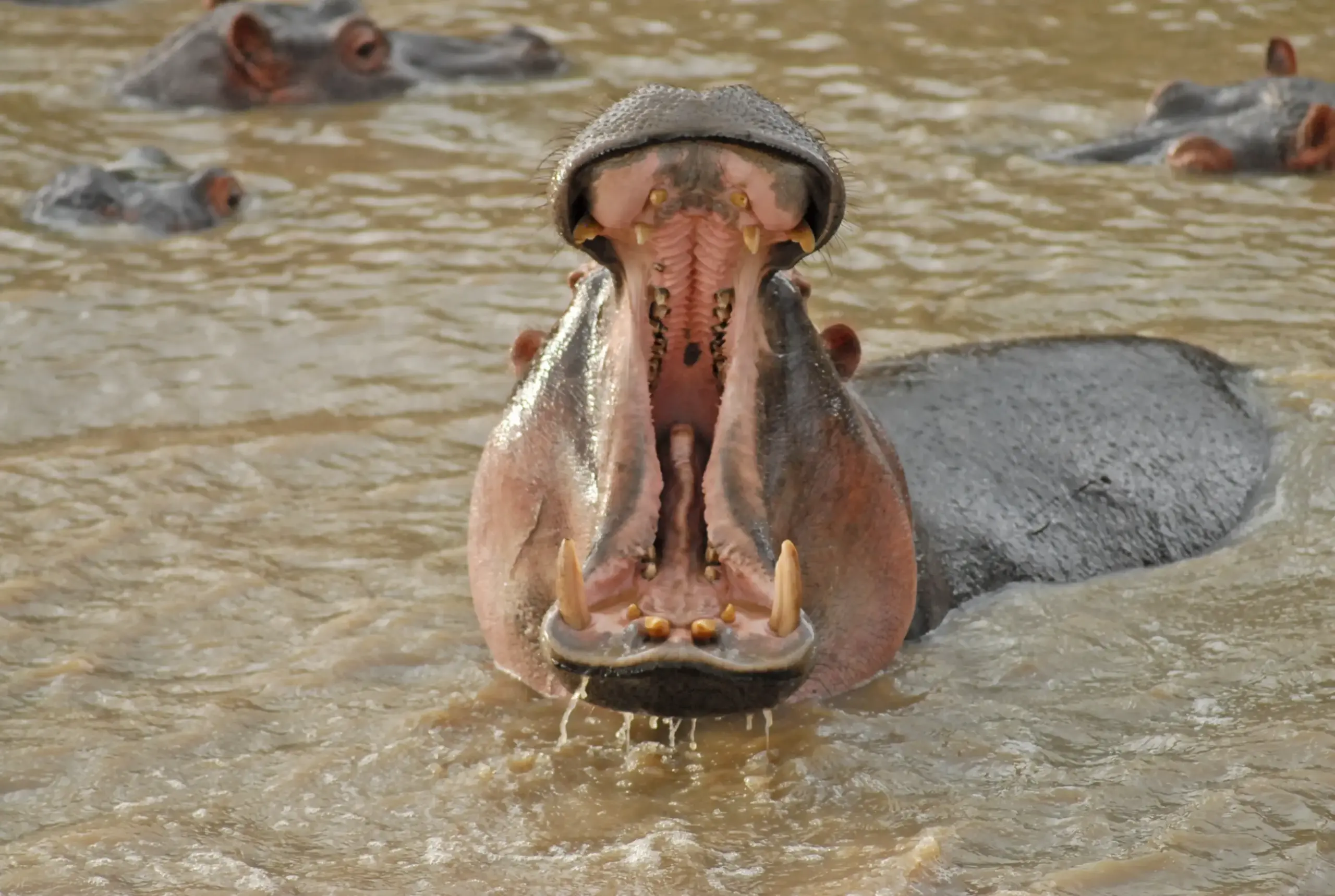
es, with their formidable size and aggressive nature, are a common sight in the water bodies of the Masai Mara National Game Reserve. Weighing close to 1500 kilos, they can hold their breath underwater for up to five minutes, fascinating those interested in aquatic wildlife.
Hippos are most active at dusk when they leave the water to graze. Their population in Sub-Saharan Africa is estimated at between 125,000 and 150,000, reflecting their widespread presence. However, their aggressive nature makes them one of Africa’s most dangerous animals, adding risk to encounters with these giants.
Unique and Lesser-Known Wildlife
The Masai Mara is home to a plethora of unique and lesser-known species that often go unnoticed during typical safaris. From nocturnal aardvarks to social banded mongoose, the diversity of wildlife here is truly astounding.
Though not as famous as the Big Five or Big Nine, these animals play crucial roles in the Mara ecosystem, contributing to its rich tapestry of life. Here’s a closer look at these fascinating creatures.
Aardvarks (Orycteropus afer)
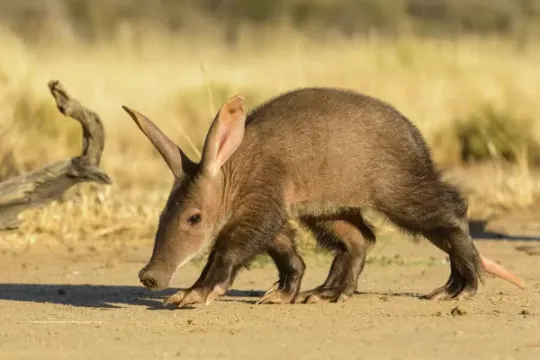
Aardvarks are fascinating burrowing mammals in the Masai Mara ecosystem. These nocturnal animals have a unique appearance, with a hairless body, an arched back, and thick claws on their forefeet for digging into termite mounds. Their diet primarily consists of ants and termites, making them integral to controlling insect populations.
Aardwolves (Proteles cristatus)
Aardwolves are often mistaken for small striped hyenas due to their similar appearance, but they are distinctly different creatures. These solitary, nocturnal animals inhabit open, grassy plains and feed almost exclusively on termites.
Their distinctive yellowish coat with black stripes and bushy black-tipped tail make them a unique sight in the Masai Mara.
Banded Mongoose (Mungos mungo)
The banded mongoose is a highly social species, often seen foraging in groups. Characterized by dark bands across their backs, they are distinguished from other mongoose species. Their group living and cooperative foraging behavior make them interesting to observe in the wild.
African Hare (Lepus capensis)
African hares are a common sight in the grasslands and wooded savannas of the Masai Mara. These solitary animals, with a lifespan of around 12 years, are known for their powerful hind legs that allow quick escapes from predators. Their solitary nature often makes them a fleeting but memorable sight during a safari.
Avian Wonders of Masai Mara
The Masai Mara is a birdwatcher’s paradise, home to over 500 recorded bird species. From the regal Martial Eagle to the vibrant Lilac-breasted Roller, the diversity of avian life adds a colorful dimension to the safari experience. These birds play crucial roles in the ecosystem, contributing to its health and balance.
Here’s a closer look at the different categories of birds that make the Masai Mara a haven for avian enthusiasts.
Raptors and Birds of Prey
Raptors and birds of prey are among the most impressive avian species in the Masai Mara. The African white-backed vulture, with its grey neck and white-feathered collar, is a common sight in East African national parks and reserves, including the Masai Mara. These social birds primarily feed on carcasses and play a vital role in the ecosystem by cleaning up after other predators. Their striking colour difference from other vultures makes them easy to identify in the wild.
Other notable raptors include the black-winged kite, often seen hovering over open grasslands, and the African Fish Eagle, recognizable by its white head and large black wings. The Martial Eagle, with a wingspan of up to 2.6 meters, is one of Africa’s largest eagles and a formidable predator. The distinct colour difference in their plumage helps birdwatchers and wildlife photographers easily spot and identify these majestic birds.
Colorful Species
The Masai Mara is home to a variety of colorful bird species, making it a visual feast for visitors. The Lilac-breasted Roller, with its stunning plumage, is often seen perched in open landscapes, adding a splash of color to the scenery. Alongside it, the Kori Bustard, the heaviest flying bird native to Africa, struts through the grasslands with its impressive size. The Secretary Bird, known for its long legs and unique hunting style, is often spotted stalking across the savanna. Meanwhile, the Marabou Stork, with its distinctive appearance, can be seen around water bodies, adding to the avian diversity.
The Superb Starling, with its iridescent blue and orange feathers, is another vibrant species that enhances the biodiversity of the Masai Mara. These birds, along with other vibrant species, make birdwatching an exciting activity for safari-goers, offering a colorful and dynamic experience in the Masai Mara.
Migratory Birds
From November to April, the Masai Mara becomes a temporary home for many migratory birds. This period is the best time for bird watching, as numerous species pass through the region, adding to the richness of the avian population.
The sight of these birds, with their graceful movements and varied calls, adds a dynamic aspect to the wildlife experience in the Masai Mara.
The Great Migration Phenomenon
The Great Migration is one of nature’s most spectacular events, drawing visitors from around the world to the Masai Mara, particularly the Masai Mara Triangle. During July and August, millions of wildebeest, zebras, and gazelles journey from the Serengeti National Park to the Masai Mara, creating a breathtaking spectacle of wildlife in motion.
The best months for viewing this phenomenon in the Masai Mara Triangle are September and October, as the herds make their way back to the Serengeti. Let’s break down the key aspects of this incredible migration.
Wildebeest Migration
The wildebeest migration is the highlight of the Great Migration, featuring millions of these ungulates moving in search of greener pastures. These animals are easily recognizable by their heavily built front, slender hindquarters, and distinctive gray coats with black manes and beards. The western white-bearded wildebeest is the species that forms the large herds in the Serengeti-Mara ecosystem, creating a dramatic and awe-inspiring spectacle as they journey across the plains.
During the migration, wildebeests prefer open woodlands and grassy plains, where they can graze and avoid predators. This migration is not just a journey for food but a perilous adventure filled with challenges, from crossing rivers teeming with crocodiles to avoiding ambushes by big cats and other predators.
Zebra and Gazelle Movements
Zebras and gazelles play crucial roles in the Great Migration, often traveling in large herds that provide safety in numbers against predators. Zebras, with their distinctive stripes, are a common sight, grazing alongside wildebeests and alerting each other to potential dangers.
Gazelles, on the other hand, rely on their speed and agility to evade predators, often employing sudden leaps and quick directional changes to escape. Together, these animals create a dynamic and interconnected web of life that is fascinating to observe.
Crossing the Mara River
One of the most dramatic moments of the Great Migration is the river crossing at the Mara River, a critical point in the journey where danger lurks beneath the surface. The river is home to over 3000 crocodiles, making the crossing a perilous endeavor for the migrating herds. As the animals plunge into the water, they face the threat of these formidable predators, adding a heart-pounding element to the spectacle.
In addition to the crocodiles, predators like lions and hyenas often wait on the banks, ready to ambush the weary travelers as they emerge from the water. This combination of natural threats makes the river crossing at the Mara River one of the most intense and unforgettable experiences of the Great Migration.
Conservation Efforts in Masai Mara
Conservation efforts in the Masai Mara National Reserve are crucial for preserving its incredible biodiversity and ensuring that future generations can enjoy this natural wonder. Community-owned conservancies and private conservancies around the Masai Mara, involving the Maasai community, play a significant role in these efforts, providing alternative livelihoods that help reduce poaching activities.
Local Maasai landowners partner with conservation organizations to establish conservancies that promote sustainable land use and share eco-tourism revenue with the community. These initiatives not only support wildlife conservation but also enhance the African safari experience by maintaining the pristine environment that attracts visitors from around the world. Let’s explore the various aspects of these conservation efforts in detail.
Anti-Poaching Initiatives
Anti-poaching initiatives are a cornerstone of conservation efforts in the Masai Mara, which is a national reserve with a vital status for wildlife protection. The establishment of the Mara Conservancy has significantly reduced poaching incidents, with over 3,415 poachers arrested since its formation.
Kenya Wildlife Service conducts regular anti-poaching operations in collaboration with local communities, including the Maasai people, to enhance wildlife protection and target endangered species like the black rhino. These efforts are essential for maintaining biodiversity and ensuring the survival of endangered species, particularly in areas facing challenges from human encroachment and expanding human settlements.
Community Involvement
Local communities are integral to the success of conservation initiatives in the Masai Mara. By engaging in activities that protect their natural resources and working with conservation organizations, communities help monitor wildlife populations and implement effective management strategies.
Sustainable tourism initiatives foster economic opportunities for local communities, contributing to the protection of wildlife and natural habitat, and creating a symbiotic relationship between conservation and economic development.
Wildlife Research
Wildlife research is fundamental to understanding the behaviors and interactions of animals in the Masai Mara, which is crucial for effective conservation strategies. Monitoring programs allow scientists to gather long-term data about population dynamics, migration patterns, and the health of various species within the national reserve status of the Masai Mara.
This data informs management practices and helps tailor conservation efforts to the specific needs of species and their habitats, ensuring that the Masai Mara remains a thriving ecosystem under its national reserve status.
Summary
The Masai Mara is a treasure trove of wildlife diversity, offering unparalleled experiences from the majestic Big Five to the awe-inspiring Great Migration. The intricate web of life in this region, supported by dedicated conservation efforts, ensures that the Masai Mara remains a sanctuary for some of the planet’s most extraordinary creatures. As we marvel at the beauty and complexity of this ecosystem, let us also be inspired to contribute to its preservation, ensuring that future generations can experience the wonders of the Masai Mara.
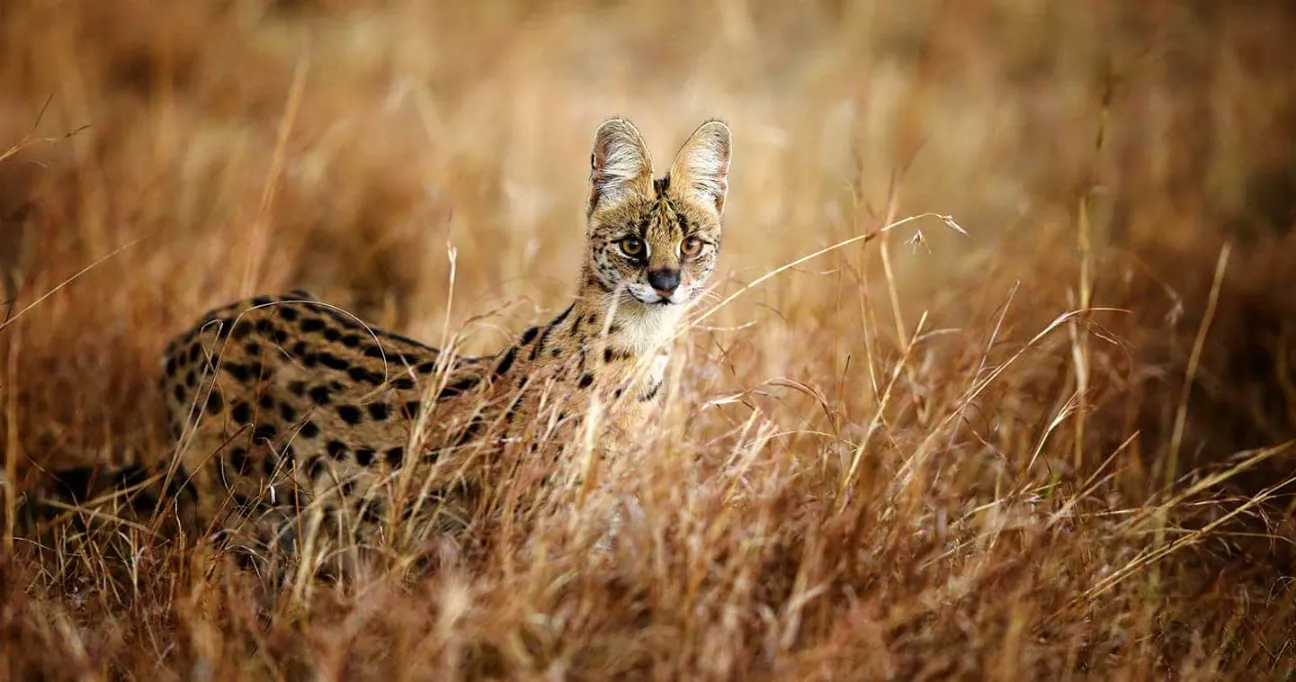
Frequently Asked Questions
What are the Big Five animals in the Masai Mara?
The Big Five animals in the Masai Mara are lions, African elephants, rhinoceroses, leopards, and Cape buffalo. These iconic species are a major highlight for wildlife enthusiasts visiting the region.
When is the best time to visit the Masai Mara for the Great Wildebeest Migration?
The best time to visit the Masai Mara for the Great Migration is between July and mid September, as this is when the wildebeests and zebras cross into the area, offering spectacular wildlife viewing opportunities.
What are some lesser-known animals that can be found in the Masai Mara?
Lesser-known animals in the Masai Mara include aardvarks, aardwolves, banded mongooses, and African hares, showcasing the unique diversity of wildlife in this region. Exploring these lesser-seen species adds a fascinating layer to your experience in the Masai Mara.
How are local communities involved in conservation efforts in the Masai Mara?
Local communities, especially the Maasai tribe, play a vital role in conservation by protecting natural resources, collaborating with conservation organizations on wildlife monitoring, and participating in sustainable tourism initiatives that benefit them.
What role do anti-poaching initiatives play in the Masai Mara?
Anti-poaching initiatives play a vital role in protecting endangered species and preserving biodiversity in the Masai Mara by significantly reducing poaching incidents. This ensures the long-term sustainability of the region’s unique wildlife and ecosystem.
What is a balloon safari and why is it popular in the Masai Mara?
A balloon safari is a unique and exhilarating way to experience the Masai Mara from above. It involves floating over the vast savannas in a hot air balloon, offering a bird’s-eye view of the diverse wildlife and stunning landscapes below. This experience is particularly popular in the Masai Mara due to the breathtaking views of the Great Migration and the chance to observe animals like lions, elephants, and giraffes in their natural habitat. The serene and peaceful journey at sunrise provides unforgettable photographic opportunities, making it a must-do activity for visitors seeking to enhance their Masai Mara safari adventure.
Information About Masai Mara and Conservancy:
Welcome to AjKenya Safaris
Thanks for stopping by! We’re excited to help you plan an unforgettable safari.
- Phone: +254 748 258880
- WhatsApp: +254 748 258880
- Email: [email protected]
- Email: [email protected]




